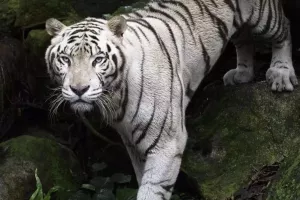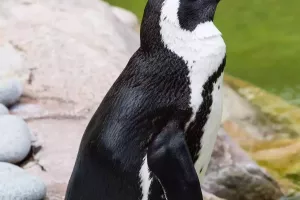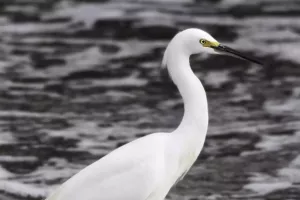When a hummingbird flies, its wings vibrate and make a buzzing sound, especially like a bee, because of the name "hummingbird". It is small in size, bright in color, and flaps its wings rapidly when it flies, which is fast, powerful and durable. Good at lingering in the flowers for a long time, sometimes flying upside down.
The plumage of hummingbirds is generally blue or green, and the lower part of the body is lighter in color. Some male birds have a crest or slender tail feathers. Among the males, the vast majority are blue-green, and some are purple, red or yellow. The female plumage is darker.
Hummingbirds are the smallest birds in the world. Generally speaking, their body length is between 6-12 cm and their weight is only about 5 grams. Even the smallest of these hummingbirds, the red-hidden hummingbird and the bee-sucking bird, weigh less than 2 grams, but these tiny bodies pack a huge amount of energy. Hummingbirds not only have a very complete and complete physiological structure, but they are even very capable in some aspects.
Hummingbirds are veritable "masters of temperature adjustment" in the animal world. In order to better adapt to the environment and save physical strength and calories, hummingbirds can drop their bodies by 10-33°C overnight. Even, according to the records of birds and non-hibernating mammals, some can drop as low as 3.26 ℃. This means that the hummingbird's body temperature is like the freezer compartment of a refrigerator at this time. Hummingbirds look and feel dead at this time, and they come back to life at dawn. And, during the cooling process, their heart rate will automatically slow down to reduce energy expenditure.
Hummingbirds are also the only birds that can fly backwards. It can flap its wings 80 times a second. Like a high-speed machine, small and precise. If calculated by body weight and food weight, the energy expended by a hummingbird to fly is equivalent to a person running 150 kilometers in one hour. If a person does this, he needs to eat 100 kg of glucose a day to maintain muscle function. In addition, they are very flexible and can hover, spin, and fly upside down at will.
While we still don't know how the hummingbird maintains its energy balance, it is safe to say that its muscles are very powerful. Young hummingbirds get a mixture of fat and protein from insects and nectar as they grow. When they grow up, they live entirely on the glucose they get from the nectar.


